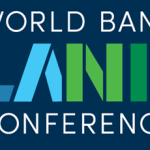The potential contribution of land-based financing to the development of sustainable and equitable cities and properly serviced communities is not often fully realized, particularly in many developing countries. Use of land-based financing tools is premised on the fact that land is a key factor of production and an important source of financing for urban development, including infrastructure, social housing and basic services. It is also immovable and visible, and hence taxes and fees tied to land cannot be avoided by relocating to another place.
The three tools developed under this theme are:
- Innovative Land and Property Taxation
- Land Based Financing
- Valuation of Unregistered Land and Properties
Revenue from taxation can be used to subsidize affordable housing, land provision, economic growth and promote investment in slums and low-income neighborhoods.
While being a powerful source of revenue, it should also be seen as a tool to promote the development of desirable locations, the regulation of the land market and to redistribute to the public the benefits of the unearned increase in land values.
GLTN tools on innovative land and property taxation offer governments’ officials and community leaders at all levels a step-by-step approach to implementing a range of land and property taxation policies, strategies, tools and instruments. They also present various taxation alternatives (with examples from various countries) that can be adapted to local contexts and capacities.
Key documents
In 2016, UN-Habitat and GLTN released a training package (reader and trainer’s guide) for land-based local government financing tools. Three powerful elements are combined in the package:
- A discussion of the seven most common tools and a summary of the most recent literature on each, presented in a reader;
- 21 case studies illustrating both strengths and weaknesses in the application of the tools in various cities and countries; and
- An interactive, joint learning environment that can be adapted to the needs of participants and promotes learning through the development of individualized action plans.
The seven tools covered are the annual tax on land and property, including the site value tax; betterment charges and special assessments; developer exactions and impact fees; land value capture taxes; the sale of development rights; the sale and leasing of public lands; and transfer taxes and stamp duties.
Land-based financing methods have considerable potential for linking the value of urban development with public revenue generation in growing urban areas. Such mechanisms can also be used to direct spatial growth in sustainable patterns, enhance economic development, support affordability, and facilitate social equity.
Key documents
Everything we do as individuals or as groups of individuals in business or as members of society is influenced by the concept of value. This means owners of unregistered land and properties are at competitive disadvantage against those with registered property.
It is for this reason that GLTN developed a tool for the valuation of unregistered land and properties that can benefit the vulnerable groups and support the operationalization of the continuum of value concept.
The increasing pressures on land and property are pushing land acquisitions and markets to peripheral zones where land markets do not exist and there is poor related data on land and property transactions. The pressures are as a result of global population growth, effects of climate change, urbanization and rural-urban linkages, globalization of land and property markets, all of which lead to limited access to land and properties for disadvantaged groups. In some situations, the requirements for land and properties to meet developments projects targets bring the poor communities into discussions about the value of their properties. This includes compulsory acquisition, compensation, resettlements and responses to natural disasters. The opaque values of unregistered lands are a major cause of inequities and thus reduce the confidence of communities in to supporting these development initiatives. This delays implementation while frustrating transparent and equitable compensation for unregistered properties; resulting in unintended harmful long-term consequences for the affected parties.
In an effort to address these problems, GLTN partners who subscribe to and adhere to the core values of GLTN, and supports scalable land tool development, capacity development and knowledge sharing, have joined hands in an initiative to develop a guide for valuation of unregistered lands and properties. This collaborative effort has brought experts and practitioners together with a view to design features the most fit-for-purpose valuation methodologies. This initiative also supports the principles provided in the Voluntary Guidelines on the Responsible Governance of Tenure of Land, Fisheries and Forestsand is exepcted to go a long way towards the attainment of the SDGs and Habitat III.







